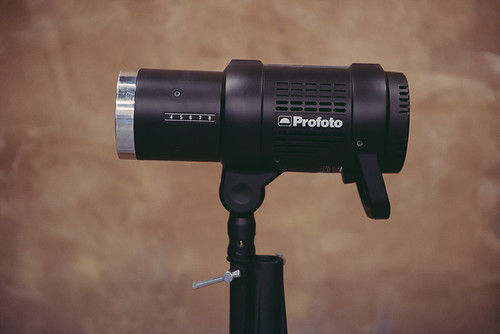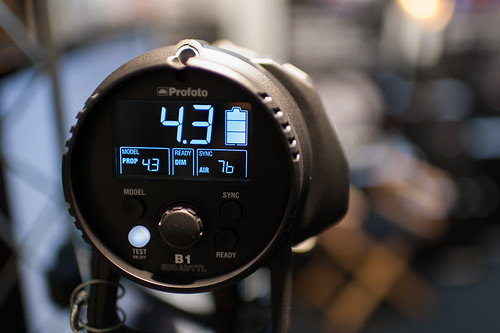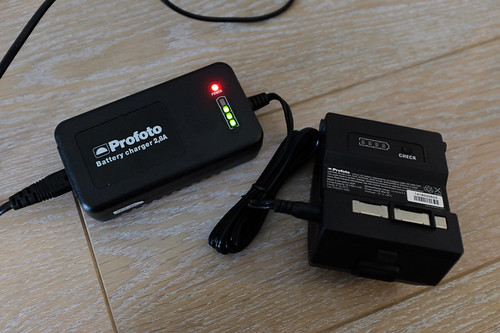Profoto
released last year new flash product
Profoto B1 marketed for off-camera flash segment. It is compact, cordless,
powerful and remote TTL controlled with new Air Remote TTL trigger. You can check the tech specs and official FAQ.
As the Nikon Air Remote was finally available, I wanted to try out how the unit
works in practice. I used the flash & Air Remote TTL-N remote in outdoor
location & indoor studio shoot taking about 1000+ frames. For me, using the
gear in real shoots is best and only way to test how they perform. Some first
impression below and separate section about Air Remote TTL.
B1 unit
has familiar slick design from D1 studio monoblock series. There are some
changes especially in the controls but previous D1 users should be quickly
familiar with B1. Flash unit is only 3kg with battery. Having no cables makes
B1 super easy to move around both in location and in studio use.
in studio use (in the background with beauty dish)
in location use
LED
modeling light in the flash lasts longer (around 90 minutes by the specs) than
traditional halogen bulbs and flash power can be remotely controlled either in
manual or TTL mode with new Air remotes.
The B1 also has an optical slave and a sync jack, for using the flash
with other radio triggers. I also tested the B1
with PocketWizard PlusII tranceivers and it worked flawlessly with them.
Colour
temperature in B1 compared to AcuteB + AcuteB head seemed to be same both in
low & high power settings. Very consistent good quality light and all
Profoto modifiers can be used with the B1 flash. Light consistency and durable
build in the unit is one of the reasons to pay premium for flash brands like
Profoto.
B1
flashes are designed for location use so there are some trade offs made that
makes them less ideal for studio/location lights compared to older AcuteB(2)
flashes. B1 can't be trickle charged from AC while in use and lack of modeling
light adapter might be minus for some studio photographers. I used the B1 in two shoots for about 7 hours
taking around 1000 frames and there was still power left at the end of day. I
was charging the unit briefly on few occasions but can be said that lack of AC
charging during use might not be that big issue. If you don't need to shoot in
studio with full or near full power long days, these could work really well for
only flash lights photographer needs.
charger & battery
While
AcuteB2 has AC charging and modeling light adapter its also 2kg heavier set to
carry around. That’s a big difference if you want to travel light. While the
total weight of B1 is less than AcuteB2, the flash unit itself is putting all
the load to the top of stand. For
outdoor use sturdy light stand is thus recommended.
Both the
B1 & Air Remote have USB-ports for firmware updates. HSS support came
available after testing the flashes and it makes B1 even more interesting choice for
photographers needing portable flashes.
In the HSS mode only the upper part of power range can be used.
So B1
might not have the AcuteB/Pro-B4 series of flexibility in the studio use, but is
possibly best choice for portable location light from Profoto. Cordless flash
is great thing to have once you experience it.
What I
liked:
- 500ws, that’s lot of juice in compact size
- 9 stops power range and goes all the way to 2ws allowing to shoot with fast lenses wide open
- Battery and charger shows the battery status and side inserted battery is quick to change
- Price of extra B1 battery is only about half of LiFo batteries for AcuteB (around 230€ vs 460€)
- No cables, much faster and easier to set and move around both in location and studio
- Lighter to carry around than AcuteB2 set
- LED modeling light that lasts about 90 minutes
- Wireless power control in Manual / TTL modes with Air Remote TTL
- HSS support with downloadable upgrade
Something
to improve:
- No AC connection, it can't be charged same time while used (for studio use)
- No model light adapter cable. Modelling light power can't be taken from AC (for studio use)
- As the unit is 3kg, it makes it top heavy and good light stand is needed for location shoots
- Unit costs around 1800€ but quality comes with price
Air
Remote TTL-N:
B1 came
with new remote unit supporting TTL. Canon's version (TTL-C) was first to came
out and this fall also Nikon's version (TTL-N) was released. Air Remote TTL has
good button feedback and easy to use interface. It is clear improvement
compared to older Profoto Air Remote. Two AAA batteries are used to power the
remote.
Controlling
multiple lights remotely where I could adjust power independently to multiple
groups, turn modeling light or whole flash on/of is really handy. Even with one
flash, the manual power control through remote speeds us work flow.
Good
thing with TTL-N remote is that it also works for non Nikon cameras. In manual
mode it worked with Canon & Fuji
cameras.
When the
Air Remote is on, camera's AUTO ISO setting is temporarily disabled. This is
interesting new feature that wasn't on PocketWizard PlusIII tranceiver.
When
remote is attached, shutter speed is locked to camera specific Auto-FP maximum.
I noticed that I could get clean frames with B1 & TTL-N with shutter speed
1/200 while using PocketWizard II/III and other studio flashes the safe shutter
speed was usually 1/160. With HSS upgrade, even faster speeds are possible.
TTL mode
is kind of strange as it requites two or more B1 lights to work. When in TTL
mode, flash power adjustment in Air Remote doesn’t' do anything if you are
using only one B1. Adjusting exposure from camera EV or Flash EV compensation
adjusted the flash power. When you use multiple B1 units, then the remote
buttons should also affect the flash output.
Remote
also defaults to TTL mode when powered on. I hope the future firmware updates
will allow to choose Manual as default as it usually makes more sense to use
lights in manual power control.
B1 lights
can be used by two photographers while other is using the same lights In TTL
mode and other in Manual mode. Lights will change power settings between the
flashes. Only practical need that I could think for this is when second
photographer is taking some making of documentation in TTL mode from the shoot
where manual is the main mode. But this shows that they have put thought for
even the corner case situations.
What
would make the remote even better would be showing the real power values of
flashes, not relative values. But apparently that is not possible by current
Air technology. I would also like to have remote buttons back lit to be better
visible in low light environment. Remote doesn't have sync soccet, so it only
works as transmitter.
There
were also some hiccups in reliability but those are probably caused by my D750
that is not yet fully supported by the Air Remote firmware.
Big
thanks to Fimeko for borrowing the gear.







No comments:
Post a Comment